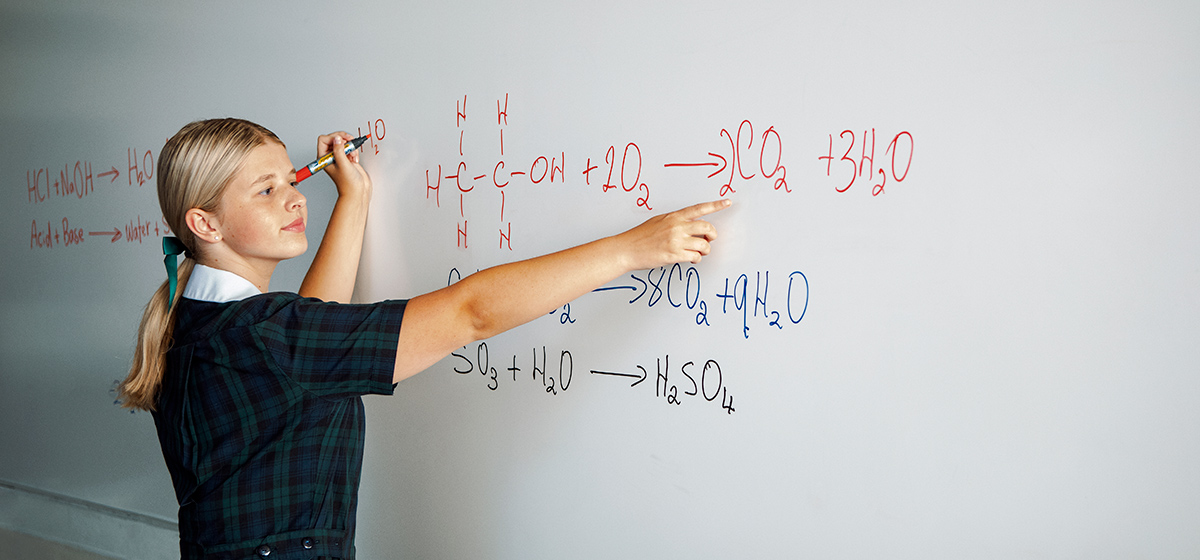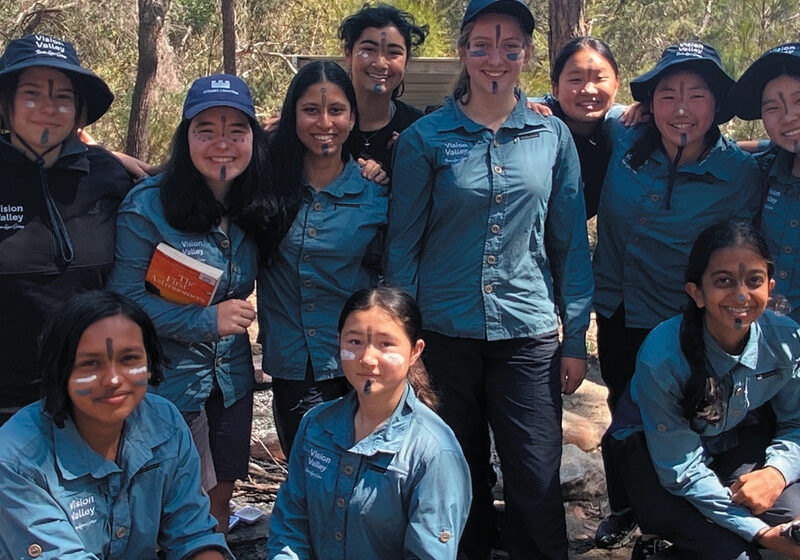Making maths visible: Using vertical whiteboards to engage and encourage Year 10 girls to take risks when solving problems in Mathematics
May 17, 2023 | Secondary School

The following paper was written by Katie Jackson as the final component of her Fellowship with the International Coalition of Girls’ Schools Global Action Research Collaborative on Girls’ Education (GARC), 2021-2022. Katie was one of twenty-two educators from around the world selected for the Fellowship. The GARC program is described as “the world’s first action research program that engages girls’ school educators from around the world in informed, collaborative and disciplined action research. The program builds both a network of girls’ school educators from around the world and a library of valuable and relevant research on girls’ education.” (https://girlsschools.org/garc-2/).
Abstract
My action research project explored how making mathematics more visible and having girls working collaboratively in solving problems could encourage girls to take more risks and become better problem solvers. I changed my classroom practice from teacher-centric to having the girls as the knowledge owners. I randomly assigned groups using playing cards at the beginning of every lesson and had the girls out of their seats solving problems using vertical whiteboards mounted around the room. I wanted to see if working in random groups encouraged the girls to talk more about mathematics and if making mathematics more visible using the impermanent whiteboards would encourage the girls to take risks and develop courage in problem solving. I undertook this project with 18 Year 10 girls over the last five weeks of the school year. Data was collected using a mixed-methods research design including peer observation, pre and post-survey, focus group interviews and my teacher observation journal. Analysis indicated that due to the whiteboards’ impermanent nature, risk taking increased. The collaboration and knowledge passing around the room made the girls better at solving problems and more free to make mistakes. I also found that other faculties started using the whiteboards similarly to have their classes make their thinking visible. The results of this action research are significant in focusing my attention on collaboration in solving problems. Moreover, this project gave the girls a greater sense of autonomy and allowed them to understand that they could solve problems. This has an enormous implication for all teaching faculties in a school and there is excellent scope for having access to whiteboards in every room.
Making Maths Visible: Using Vertical Whiteboards to Engage and Encourage Year 10 Girls to Take Risks When Solving Problems in Mathematics
The 2021/2022 action research topic of exploring strategies that build problem-solving willingness and capacity in girls provided me with the opportunity to change the traditional mathematics classroom to an environment to enhance confidence, resilience, and healthy risk taking. Atkins, et al. (1991) defined risk taking as “the preparedness of a student to attempt to answer a question when not certain of the result” (p. 297). This research, conducted at Pymble Ladies’ College in Sydney, Australia, during October and November 2021, aligned with the school’s statement of intent: Watch us change the world. This statement aims to instil courage in the young women we educate to create a future they want to see for themselves. To change the world, our girls need strong problem-solving skills and a belief in their ability to develop solutions along the way.
Skills in mathematics are highly desirable for the 21st-century workplace. Yet, many girls still see mathematics as challenging and appear reluctant to take the calculus-based courses needed for the future work environment. Despite having a growing school culture of looking at mistakes as desirable for learning, the girls are often perfectionists and see mistakes as failures rather than learning opportunities. My goal was to challenge this attitude and instil in the girls to have the courage to take risks, sit with uncertainty and work collaboratively to solve a problem.
I wondered if I could create change by making my students’ mathematical thinking more visible. According to Mertler (2020), action research is undertaken by teachers to study or closely examine an area of their teaching and classroom practice to improve or change it. As I wanted to change my classroom practice and see the impact of this on my current and future students’ problem-solving skills, action research was the most appropriate methodology. This led me to formulate my research question: How does the use of vertical whiteboards engage and encourage Year 10 girls to take risks when solving problems in Mathematics?
Literature Review
Girls need to understand mathematical concepts to go out into the world to solve problems they may face and add to the knowledge of addressing global issues. The ability to solve problems mathematically is linked to preparing students for tackling issues in real life (Halmos, 1980). Ayllón et al. (2016) suggest teaching mathematics aims to develop thinking, while the posing and solving of problems help strengthen what is learned. Girls must gain the confidence to take risks, come up against problems and work to resolve them. A study by Vermeer et al. (2000) found that when it came to problem solving, girls rated themselves lower than boys in confidence to solve problems and attributed poor results to a lack of ability or the difficulty of a task.
Collaboration is increasingly seen as an essential 21st-century skill for learning and has been widely researched around improving pedagogical outcomes. Retnowati et al. (2017) found that students working in groups performed significantly better in tests than those who worked individually and that group work had substantial social and psychological benefits. Similarly, a study by Zambrano et al. (2019) shows that collaboration benefited learning compared to individual learning in complex tasks, but performance depended on the learner’s task-specific prior knowledge. However, Pang et al. (2018) suggest that many students find working in groups dissatisfying, with teamwork the most frequently reported challenge.
There are many different definitions of problem solving. Hung and Jonassen (2012) define problem solving as “the process of articulating solutions to problems” (p. 2687). DeMatteo and Johanning (2010) refer to collaborative problem solving and suggest that working with peers pushes students to express their thinking, fostering fluency as they listen, explain and converse about their understanding of problems.
There has been much research into the area of teaching problem-solving skills in Mathematics. In one study, Emre-Akdogan and Argün (2016) taught problem-solving strategies to ten students. These skills consisted of working backwards; finding a pattern; adopting a different point of view; solving a more straight forward analogous problem; extreme cases; making a drawing; intelligent guessing and testing; accounting all possibilities; and organising data and logical reasoning. The result was that students improved on choosing and applying appropriate strategies. However, Tricot and Sweller (2014) suggest that problem solving is domain-specific, and individual skills cannot be taught as they rely on the solver’s prior knowledge. Woods (1987), for example, found that some engineering students who solved or saw over 3,000 problems could not transfer the knowledge and become better problem solvers.
A way to bridge the gap between problem solving and deep mathematical knowledge to help with problem solving is to use vertical whiteboards. Forrester et al. (2017) define vertical whiteboards as whiteboards mounted around the walls in a classroom. They see this as a way of engaging students in a mathematics classroom. Their study shows that having the students out of their chairs and working on the whiteboards led to better student behaviour.
Students were more engaged and getting through more work than in a standard mathematics lesson where they remained seated. The students could look at others’ work, seek assistance and collaborate about the mathematical problems they were trying to solve. The benefit to the teacher is they can easily see all the students’ work and thought processes and intervene when students need help.
Seaton et al. (2014) suggest that “active participation in mathematics is the key to learning” (p. 111). They discuss the idea of using blackboards (or whiteboards) in university tutorials. This process of learning mathematics invites the possibility for students to accept changes suggested either by their partners or tutor, fixing errors and false starts without the crossing out that comes when work is corrected on paper, hence producing a polished final product. They found that tutorials were no longer quiet, passive places, but students were more involved and animated. Tutors responded to the questions from students instead of being the ones asking the questions. They conclude there was more collaboration, areas of weakness were easily seen and misconceptions could be addressed immediately.
Liljedahl (2016) takes the idea of collaborative working on whiteboards and introduces the notion of thinking classrooms and how these can be developed and maintained. The concept of the thinking classroom comes from the failure to implement problem solving into a maths classroom and the realisation that students do not have to think in a traditional, teacher-centric classroom. His studies show that early efforts to get students engaged with problem-solving were less than successful. Liljedahl also observed that students who were unable to problem solve came from classrooms whose teacher’s practices did not have group work or problem solving as standard practices. To get students more involved in problem solving, the classroom space was redesigned with vertical whiteboards, mini whiteboards and flip charts used as surfaces for students to solve problems.
Liljedahl (2016) also found that students working on vertical whiteboards were faster to start work and more persistent and engaged than students working on the mini whiteboards and flip charts. The use of mini whiteboards still gave students a chance to hide work from the teacher, and the flip chart was more permanent, meaning students spent more time discussing before committing to writing. Liljedahl also noted that the students working on the vertical whiteboards did not tend to erase their work; having the space they continued to refine their work, providing almost a timeline of their thinking.
In conclusion, it would appear that problem solving can be enhanced when students work in collaboration, can see the work of others and use the teacher to intervene at just the right moment, which can move the thinking forward. As Willingham (2009) asserts, “whatever students think about is what they will remember” (p. 54). More research is needed on using the vertical whiteboard in the classroom to see what happens to girls who use it for all their mathematics lessons; whether they start thinking more, approaching problems with confidence and sharing information.
Research Context
Pymble Ladies’ College is an independent, K–12 Uniting Church girls’ school in Sydney, Australia. The school has approximately 2,300 girls enrolled from Kindergarten to Year 12. The statement of intent at Pymble is “Watch Us Change the World.” Our girls are generally from affluent homes and numerous cultural backgrounds, including Indigenous Australians. The 18 girls who participated in my action research project were all from my Year 10 mathematics class. I had taught this cohort of girls for three years so I had already established meaningful connections with them. The project took place over the last six weeks of the school year in late October and November 2021. This was not ideal, but COVID-19 lockdowns meant there were three months when I did not see my class in person. The Vertical Whiteboard project emerged from my commitment to engaging girls in learning maths with confidence and fostering enjoyment in problem solving.
The girls and their parents gave me written consent for their participation. This allowed me to film, photograph and interview them throughout the project. The students’ names have been omitted from this report to ensure anonymity.
The Action
The use of vertical whiteboards was a significant change to my teaching strategy. The intervention took place over five weeks during 20 lessons. Every lesson was designed to have the girls working in different groups randomly selected using playing cards.
The focus of each lesson was to have the girls working on problems or concept ideas that I would introduce using the whiteboards only. The problems selected were unseen and required the students to use multiple mathematical concepts. The students had to draw upon their collective knowledge to develop a solution that made sense. Most of the problems relied upon their understanding of skills learned over the last three years. In some lessons, I introduced a new concept with minimal explanation and set the class off to explore concepts and ideas through a series of questions. The studies were designed to challenge the girls and encourage them to use the knowledge available in the room to arrive at a solution.
Data Collection
To see if my intervention of using vertical whiteboards improved my students’ problem-solving ability by encouraging them to take risks, develop thinking and strengthen what had been learned, I collected my data in various ways. The deliberate use of various data sources aimed to polyangulate the data, increasing the trustworthiness of my findings while trying to account for bias (Mertler, 2020). I implemented the following data collection methods throughout my project:
- Research observations and field notes
- Peer observation
- Video recording of the class
- One-on-one interviews and focus groups
- Pre and post-surveys
I began the project by asking the class to complete a survey on their attitude to studying mathematics and solving problems, and how they felt they learned maths best. I was observed, by a colleague, teaching my class in a traditional way of being teacher-centric and watching how the students interrelated with me and each other. I then created my notes and observations and invited a colleague to my class to share her comments, which I compared to mitigate bias. These data provided an effective baseline of the students’ attitudes and engagement in a mathematics lesson. The questionnaire used Likert scales and open-ended questions which provided excellent qualitative and quantitative data sources.
Throughout the action research, I maintained a journal of my observations and video recorded some of the lessons to capture the lesson’s spirit and to see if other observations could be made.
I chose a focus group of five students to meet at the end of the intervention to learn how they felt about problem solving and the change in classroom practice. The semi-structured interview with this group allowed me to further explore new information offered by the girls (Mertler, 2020) and gave the opportunity for the group to reflect on their experiences.
Data Analysis
Once data was collected, I began to organise iy utilising inductive analysis. I used Mertler’s (2020, p. 173) “organisation, description, and interpretation” technique. I developed a coding scheme that helped to establish patterns and identified themes to answer my research question. I discussed my interpretations of the data with a critical friend to help me focus on the themes I found.
Discussion of Findings
After analysing the data generated by my research, I identified the following themes which aided in answering my research question as to how vertical whiteboards encourage Year 10 girls to take risks when solving problems in mathematics.
Knowledge was Shared by Making Thinking and Learning Visible on the Whiteboards
A key theme to emerge from the data analysis was that knowledge was shared by making thinking and learning visible. The girls gained confidence in problem-solving skills; knowledge passed around the room more actively and noisily. Initially, the girls worked in their groups but did not look at what other groups were doing and found the experience, in the words of one student, “really weird.” Another student commented that it “felt forbidden” to look at other people’s work as “we are always taught that this is cheating.”
Once the class realised they could see what other groups were doing, making learning and thinking visible, I found that expertise moved around the room. The groups became quite mobile, moving around the classroom and asking questions to clarify understanding or approaches to the problems. There were many discussions about results, and students could spot mistakes or discuss why their answers might differ from another group. The girls appreciated this way of learning. Student comments included “certain people would do a problem completely different to how I would” and “sometimes their way might have been far more efficient than what I had done.” Another student observed “it also helped me immensely to see a new perspective on solving problems as I got an insight into how my peers do it.” The majority of the class benefited from looking at other perspectives, as noted in my journal entries and the focus group discussion.
Collaboratively Sharing Verbal Answers Enhanced Risk-Taking and Problem-Solving
Compared to a lesson observed before the action research intervention, the classroom was much louder when using the whiteboards. It seemed that talking problems through was helpful for engagement and problem-solving. There seemed to be power in collaboration. The whiteboard lessons had all students on the task rather than some being less than attentive and talking about other things. All the conversations were about mathematics, and the students found it beneficial to have these conversations. One student commented, “It was definitely more relaxed because it was more about the learning experience rather than getting it right.”
From the pre and post-survey data, I found that the students changed their minds about problem solving due to this action. Initially, only eight of the 14 students felt that to solve problems, they needed to try multiple approaches to constructing a solution to a problem. After using the whiteboards and communicating in their groups, the post-survey showed that ten out of 13 students felt confident to try multiple approaches. This was also observed with the students trying numerous methods to solve the problems on the whiteboards. Pre-action, if a student got stuck on a problem, they asked the person next to them and then typically gave up if neither knew how to solve the problem. By contrast, there was no giving up using the whiteboards as the answers were visible in the room, and hints could be seen by looking at the other groups’ work or moving to a group to ask questions.
The girls found that using the whiteboards was an excellent way to share and consolidate their understanding. One student commented “solving problems using whiteboards also means that everyone has a chance to understand the solutions well and that people have the opportunity to look at problems in different ways by observing others’ solutions.” Observational data I collected reflected the findings of Forrester et al. (2017) and Seaton et al. (2014) that students using whiteboards are more involved with mathematics as there is more collaboration, and areas of weakness are quickly addressed. They listen, explain and converse about their understanding of problems.
Learning From Peers Increased Understanding and Consolidation of Mathematical Ideas
I found less reliance on the teacher as the students used the knowledge in the room to help move the problem solving forward. A student commented “in the smaller groups everyone gets to think about it. Then, if you get stuck, someone will have something to do next or some progressions that can get you closer to the answer.”
This way of making mathematics more visible through the use of vertical whiteboards was excellent to consolidate the understanding of mathematical ideas. I found that when asking groups about their solutions or why they had taken a particular approach, the lower attainment students had an excellent grasp of the ideas. They could articulate the mathematics logically which showed that they had learned a great deal from their peers. There was a lot of peer tutoring, with no group moving on until they made sure that everyone understood the work. Many conversations included phrases such as “stop! How did you get that?” showing that the class took their learning seriously and they all wanted to get better at solving the problems.
Risk Taking Increased Related to the Impermanence of Writing on Whiteboards
The non-permanent nature of writing on the whiteboards encouraged the girls to take more risks. They were observed to be much faster to start work and were allowed to take chances on the whiteboards due to the ease of erasing incorrect work. One student commented “it was good, as we were allowed to be wrong.” Another stated “I also liked how we could try, write and erase different ways of solving the questions while using whiteboards.” As familiarity with using the whiteboards grew throughout the project, there was less erasing of mistakes, and the students left their work and continued working on the problems in another space. I believe this occurred because the girls no longer worried about being incorrect. They saw their mistakes as learning experiences, and the wrong work was there as a reminder of the error and how they had moved their learning forward.
By working on the whiteboards, the students took risks by working in a group and were vulnerable by adding their understanding to the conversations. One student remarked “at first I didn’t know what was going on, and I felt like I didn’t understand … then I realised it was up to me to ask them to slow down and explain it to me.” Another student stated “I liked not being told how to do something. We could do it the way we wanted and get to the answer.”
Not all students enjoyed the risk. One commented “sometimes it could feel very tense and competitive.” One of my quieter, less-assured students did not like using the whiteboards at all. Even though she had good ideas to add to any assigned group, she generally stood back and would not participate unless I asked her direct questions. However, all the other class members soon became comfortable with the whiteboards, with all the girls commenting on how nice it was to “meet new people while working on something together.”
The survey and focus group data showed that the students’ overall impression of using the whiteboards to undertake problem solving was more engaging. Observational data confirmed this. The students were much louder, with mathematical conversations happening in every group. The following comment powerfully conveys the potential of using whiteboards in girls’ mathematics classrooms:
“I loved this experiment of using the whiteboards in small groups to solve problems. It allowed me to grow more confidence in my ability to share my reasoning and working out with others. It also helped me immensely to see a new perspective on solving problems as I got an insight into how my peers do it.”
Conclusion
The use of vertical whiteboards in my mathematics classroom did encourage the girls to take risks when problem-solving. I answered the research question by identifying the four themes from the data analysis. After five weeks of using vertical whiteboards, the girls expressed more confidence in their ability to attack mathematical problems. The classroom was more animated and less passive than a teacher-centric led lesson. The girls enjoyed robust conversations. They listened, explained, and conversed about their understanding of problems.
My role as a teacher changed as the students began to rely on each other for solutions rather than always asking me if they were correct. The students became critics of each others’ work by pointing out mistakes. As a teacher, the students’ mathematical thinking was visible. I was easily able to intervene as necessary or stop a lesson and draw the class’ attention to any misconceptions using one group’s solutions.
There is more research to be done on the use of a wall of whiteboards. This research was done with an accelerated Year 10 class with a good understanding of mathematics. I believe that further research is necessary for using this with a mixed ability or low attainment class. The classrooms at my school are shared spaces and I would often find other subject areas using the boards. I believe that further research is needed to see if other facilities can utilise walls of whiteboards and whether whiteboards of this size and layout should be in all teaching spaces in a school.
Reflection Statement
Undertaking this action research project has been an emotional, exciting and rewarding professional journey. I have been challenged to read the literature, change my teaching practice and observe the implications for my class. I have enjoyed the cyclical nature of action research, and I can see myself continuing this journey and refining my ideas for using vertical whiteboards in the classroom. As a mathematics teacher, I have always worried about problem solving in my classroom. When asked by parents “how do I get my daughter to be better at problem-solving?” I have often had no valuable solutions to give them. As a classroom teacher, I know that my classes can solve routine questions, but when faced with an unfamiliar problem, hands go up and they expect me to show them how to solve them, which does not require them to think. I have enjoyed challenging my class, taking a step back and letting the girls do more thinking and come up with solutions independently.
The professional learning I have gained from this GARC project has been immeasurable. It has pushed me to get out of my comfort zone and has introduced me to the world of academic writing. This has given me the courage to pursue more study in educational psychology. I want to learn more about how students learn and how I can add that to my use of whiteboards.
I want to thank Dr. Sarah Loch for her unabiding belief in me and her generous gift of time to help me throughout the project. I would also like to thank my principal, Dr. Kate Hadwen, for allowing me to be part of the GARC action research programme and for her support in providing the whiteboards for the classroom. Lastly, I would like to thank my research advisor, Dr. Carolyn Mak, who tirelessly read every draft, organised meetings and provided feedback and encouragement through every step of this project.




